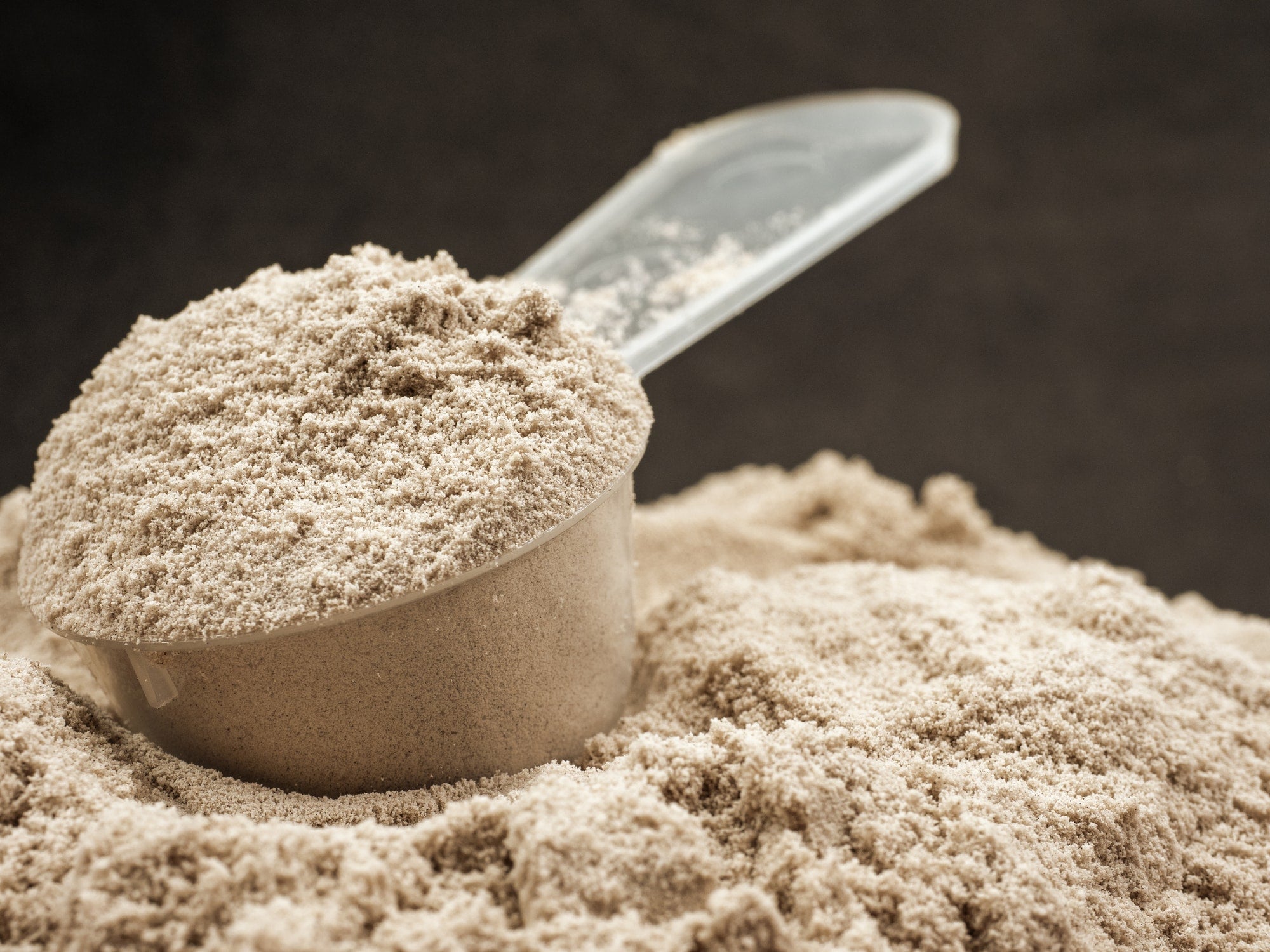Have you ever walked through the milk or protein powder aisle?
You might have felt overwhelmed with all the different kinds of whey available on the market. Or even by the different kinds of protein powder…
Well I’m here to break down all the different types of whey out there. I want to make it easier for you to understand the differences. So, you can make an informed choice when including whey protein into your diet.
Hopefully you will leave understanding the different types. But also, that you have a short but strong basis on the benefits of consuming grass fed and cold filter processed whey over the standard industrial whey proteins.
What can be found on the protein market?
Animal Protein: When the protein from milk is broken down, you get the watery-by product of the milk manufacturing process. Composed of two kinds of protein:
- Casein: makes up of 80% of the protein found in milk
- Whey: makes up the remaining 20%.
Although both are considered high quality as they contain all amino acids, whey is considered particularly more beneficial in increasing the production of new protein in your muscles.
Plant-based protein: on the market, are vegetable protein powders such as pea or rice. However, we will not dive into those as they have a lower amino acid profile and are harder for the body to absorb.
The different kinds of whey
There are currently 3 different kinds of whey protein powder on the market: isolate, concentrate and hydrolysate. Each one is processed differently and their nutritional content varies. Concentrate and isolate tend to be the most popular on the market. All come, however, with their advantages and disadvantages.
A) Whey Isolate
Once processed, whey is usually broken down into two forms: (Smithers, 2008)
- Concentrate: typically comprises of around 80% protein
- Isolate: typically comprises around 85 – 90% protein
Isolate undergoes additional processing and purification. It minimises extraneous carbohydrate and fats. In order to maximise the protein content. It results that, isolate has a higher protein content than concentrate.
However, it contains less naturally occurring benefits in terms of macro- and micro-nutrients. Indeed, they are destroyed in the last process.
B) Whey hydrolysate
Whey protein hydrolysate can either be a concentrate or isolate. Nonetheless some of the amino bonds have been broken by exposure of the proteins to heat, acids or enzymes.
The advantage is that it is more quickly absorbed in the stomach. Indeed, you get the quickest protein absorption due to the hydrolyzation, which almost acts as a pre-digestion process. This generally means faster recovery rate for your muscles.
However, hydrolysate generally doesn’t contain all the naturally occurring benefits that concentrate may offer. Especially if whey concentrate is cold filtration processed and grass-fed. Besides, despite its high price, hydrolysate generally tastes bad.
C) Whey concentrate
It is generally cheaper and easier to find as it is quite popular for some good reasons!
As it goes through less processes, relatively to others protein powders, concentrate is the healthier. Indeed, it contains the naturally occurring macro- and micro-nutrients derived from the manufacturing process. It is also the most calorie dense form of supplement. Isolate whey may have higher protein percentage, concentrate is healthier. Because, it has nutritional benefits that go beyond better muscle recovery.
D) The cold filtration processed and grass-fed whey concentrate
This form of concentrate is really hard to find and serves as a reference in terms of nutritional profile. Indeed, if grass fed and cold pressed, whey concentrate can be especially healthy.
Heat can often kill all the micronutrients (ie. the powerful antioxidants) and be more damaging to the proteins hence cold pressed whey is ideal.
Additionally, it’s easy to assume that most cows eat a grass-fed diet. However, that is not the case – most cows are fed a grain rich diet (generally with fertilizers and GMO) and are given antibiotics to grow faster and bigger. This unfortunately affects the quality! Whereas grass-fed farming is more sustainable and generally more ethical. This method ensure that the cows produce a better whey in terms of quality, nutrient profile and taste
Protelicious is just that – cold filtration processed and grass-fed whey concentrate that has nothing to hide and goes above and beyond simply helping in muscle recovery and tasting good.
Conclusion
Protein market has a lot to offer. However, as it is about your nutrition, it’s vital to know what you are doing. Reminder that animal protein has the most complete amino acids profile. Then that whey is generally more nutritive than casein. Finally, master the difference between the 3 kinds. Isolate contains more protein, hydrolysate is the quickest absorbable and Concentrate is the healthier. Notice that cold filtered process and grass-fed whey concentrate is definitely the optimal for overall health.
Hopefully this helped clarify between the different kinds of whey in regard to price, digestibility, taste, absorption and richness in nutrients!
Check our blogs to have science-backed information about Protein, Protelicious and nutrition.





